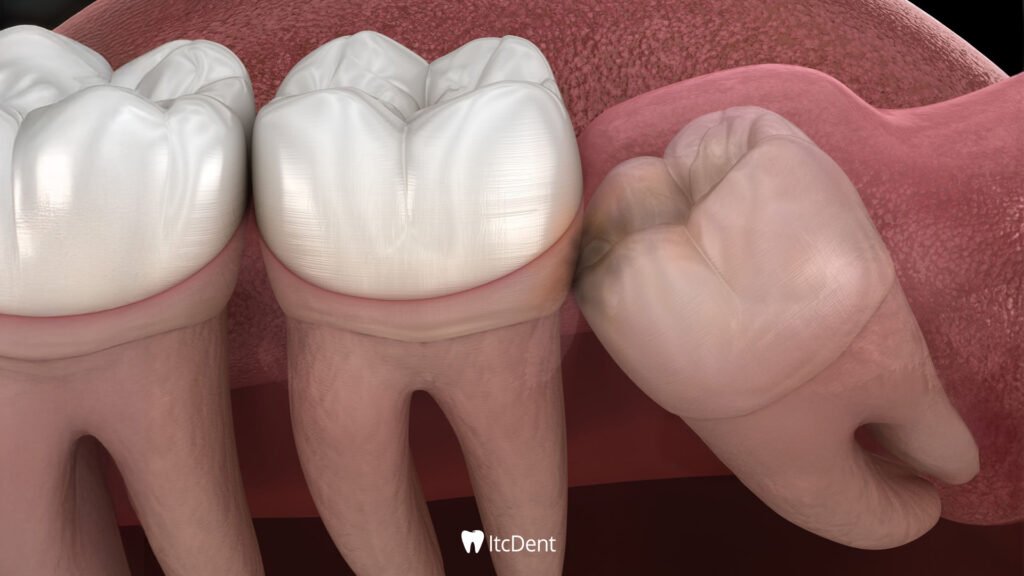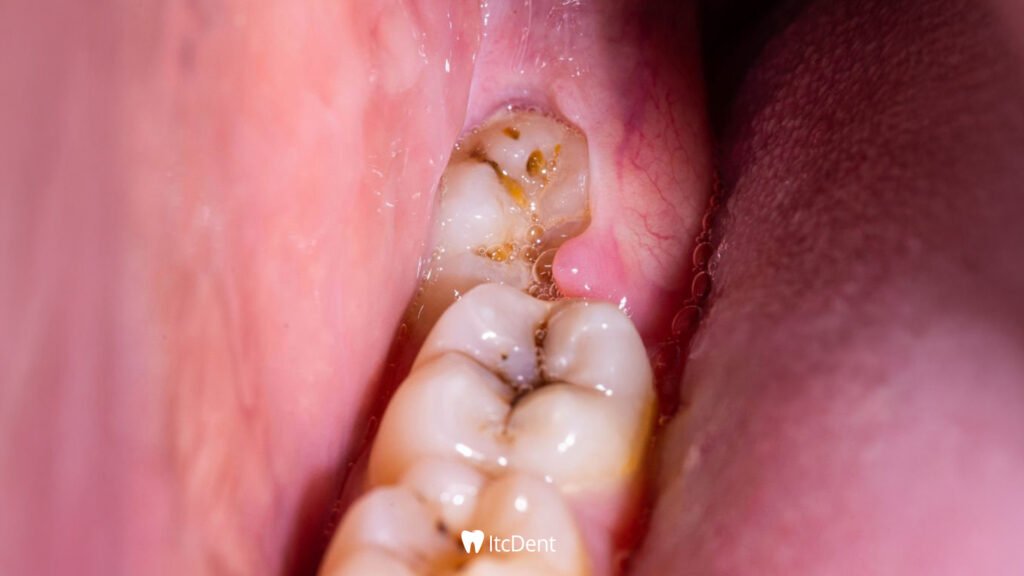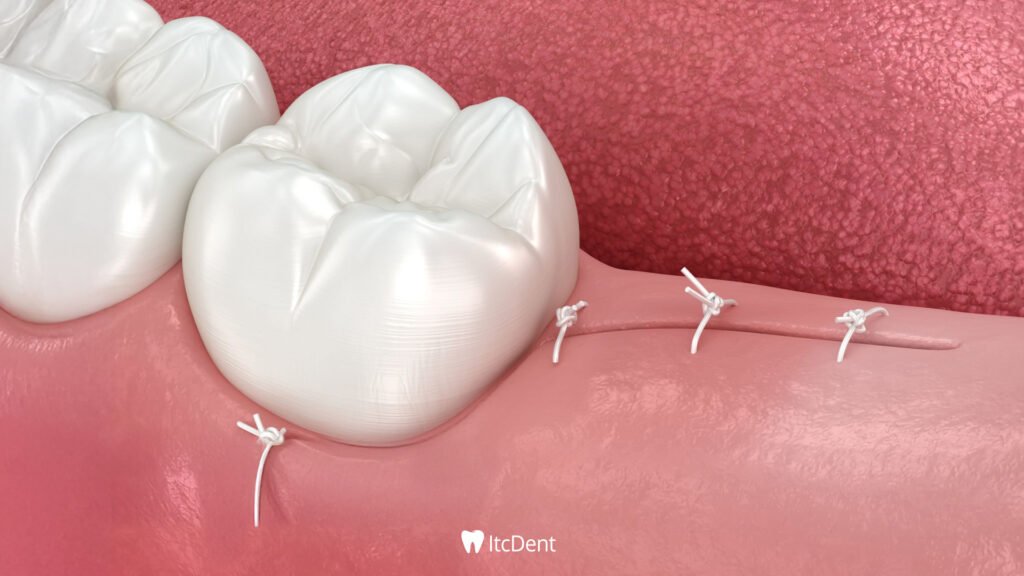
Impacted Tooth Extraction
When most people think of impacted teeth, they immediately think of a painful procedure, a swollen cheek, and even a challenging recovery process lasting several days. This thought is actually quite common, as we often hear people who have experienced this process say things like, “I wish I hadn’t waited so long” or “It was so difficult, but I finally feel relief.” However, the truth is, impacted tooth extraction isn’t as scary as it seems.
Yes, it’s a medical procedure; but when performed at the right time, by an experienced dentist, and under the right conditions, it can be quickly resolved and provides significant long-term relief for your oral and dental health. Impacted teeth can unnoticed damage the jaw structure for years, affect the alignment of other teeth, and even cause chronic pain. Therefore, impacted tooth extraction should be viewed not only as a surgical procedure but also as an important step in maintaining your oral health.
What is an Impacted Tooth?
Simply put, an impacted tooth is a tooth that should normally erupt but remains hidden beneath the gum, or only partially erupts. In other words, the tooth is actually there but hasn’t fully emerged. The most common teeth to experience this are wisdom teeth, the third molars, the last teeth to erupt.
So why do some teeth fail to emerge? There can be several reasons. The most common is insufficient space in the jaw. Over time, the human jaw has shrunk, but the number of teeth has remained the same. This causes the teeth, especially the ones at the very back, to become crowded and unable to find space to emerge. As a result, the wisdom tooth may attempt to erupt at an incorrect angle or become completely trapped beneath the gum.

Sometimes, not only wisdom teeth but also canines or other molars can become impacted. However, wisdom teeth are the most problematic. They create limited space in the jaw and often disrupt the jaw’s balance when they erupt. Furthermore, because the impacted tooth is covered, it can become infected without being noticed or cause pain by pressing on surrounding teeth.
In short, an impacted tooth is essentially a tooth that “wants to come out but can’t.” While it sits quietly inside our bodies, it can eventually cause problems such as swelling in the gums, pain, or misalignment of other teeth. Therefore, taking impacted teeth seriously and seeking information about them at regular dental checkups can provide significant peace of mind in the long run. Early detection of an impacted tooth is often much easier and less problematic to treat.
Why Does an Impacted Tooth Cause Problems?
You might be thinking, “A tooth buried beneath the gum isn’t visible after all; so we might as well not touch it; what’s the harm?” This is actually a fairly common thought. However, the truth is, impacted teeth are often silent but insidious problems. So, while they may not initially cause any symptoms, they can cause numerous oral problems over time.
First, bacteria begin to accumulate around a tooth buried beneath the gum. This is especially common in teeth that haven’t fully erupted. This is because the tooth is partially exposed, making it difficult to brush in that area. Over time, inflammation can develop, leading to pain and a foul odor. In other words, an “invisible” tooth can become a source of infection without you even realizing it.
Another common problem is gingivitis. The gum tissue surrounding the impacted tooth becomes swollen, tender, and red. If this condition persists for a long time, you may even experience discomfort while chewing.
The impacted tooth can also put pressure on adjacent teeth. This pressure can damage the root of the adjacent tooth or shift its position. Sometimes, even a perfectly healthy tooth can become crooked or painful over time due to the pressure exerted by the impacted tooth.

More interestingly, in some people, this condition can manifest as jaw pain or headaches. Because impacted teeth, especially those in the lower jaw, are close to nerves, pressure in this area can cause radiating pain.
And in rare cases, cysts, or small fluid-filled sacs, can develop around impacted teeth. This condition often goes unnoticed until swelling or an asymmetry in appearance occurs.
When is an Impacted Tooth Extracted?
Not every impacted tooth needs to be extracted. However, a dentist will evaluate the tooth’s position and its impact on surrounding tissues based on X-ray results. If the tooth:
- has caused an infection,
- is putting pressure on the jaw structure,
- is threatening neighboring teeth,
- is causing gingivitis,
- or has a high potential for future problems, extraction is recommended.
How is an Impacted Tooth Extracted?
How is an impacted tooth extracted? It’s not as scary as it seems. It’s usually performed by an oral and maxillofacial surgeon and is a completely controlled and safe process. First, the dentist takes a panoramic X-ray and examines the tooth’s exact location, angle, and proximity to the nerves. This allows the extraction plan to be prepared in advance. Then, local anesthesia is administered; this means you won’t feel any pain during the procedure; you might feel only a slight pressure or movement, but there’s absolutely no pain.
If the tooth is impacted beneath the gum, a small incision is made in the area, and if necessary, a small portion of the surrounding bone is removed. In some cases, the entire tooth is removed in one piece, while other times, it is divided into several smaller pieces for easier removal. After the tooth is removed, the area is carefully cleaned, and if necessary, a few stitches are placed. These stitches are usually removed within 7-10 days or dissolve on their own. The entire procedure takes approximately 15 to 40 minutes. So, it’s not as long, complicated, or painful as you might think; on the contrary, in the right hands, it’s a very comfortable procedure.

Frequently Asked Questions
1. Is impacted tooth extraction very painful?
No. Thanks to anesthesia, you won’t feel any pain during the procedure. There may be some mild pain afterward, but it can be controlled with medication.
2. Should every impacted tooth be extracted?
No. If the tooth is completely silent and harmless, the doctor may only request regular follow-ups.
3. Will there be facial swelling after the extraction?
Yes, but this is temporary. Applying ice to the area in the first few days will reduce the swelling.
4. Is removing stitches difficult?
No, it’s a short procedure of just a few minutes. If dissolvable stitches were used, they won’t be necessary.
Impacted Tooth Extraction Prices
The extraction of an impacted tooth often raises the question, “How much will it cost?” However, the cost of this procedure is not fixed, as each individual’s oral structure, the location of the tooth, and the degree of difficulty of the procedure vary. Details such as whether the tooth is completely subgumbed or embedded in the bone, and whether it will be removed in one piece or in sections, all influence both the process and the cost.
However, it’s important to understand that impacted tooth extraction isn’t just a matter of “cost”; it’s a significant investment in your long-term health and comfort. An unextracted tooth can lead to much more serious problems over time, such as inflammation, pain, gum disease, and even deterioration of neighboring teeth. In other words, an extraction today can prevent significant treatment costs and painful procedures in the future.
The best way to get a clear picture of your situation and ensure a personalized plan is developed. This way, you can learn the details of the process and determine the most appropriate solution for you. Remember, a healthy mouth is paramount; therefore, instead of postponing impacted tooth extraction, it’s best to consult with us and take action.

